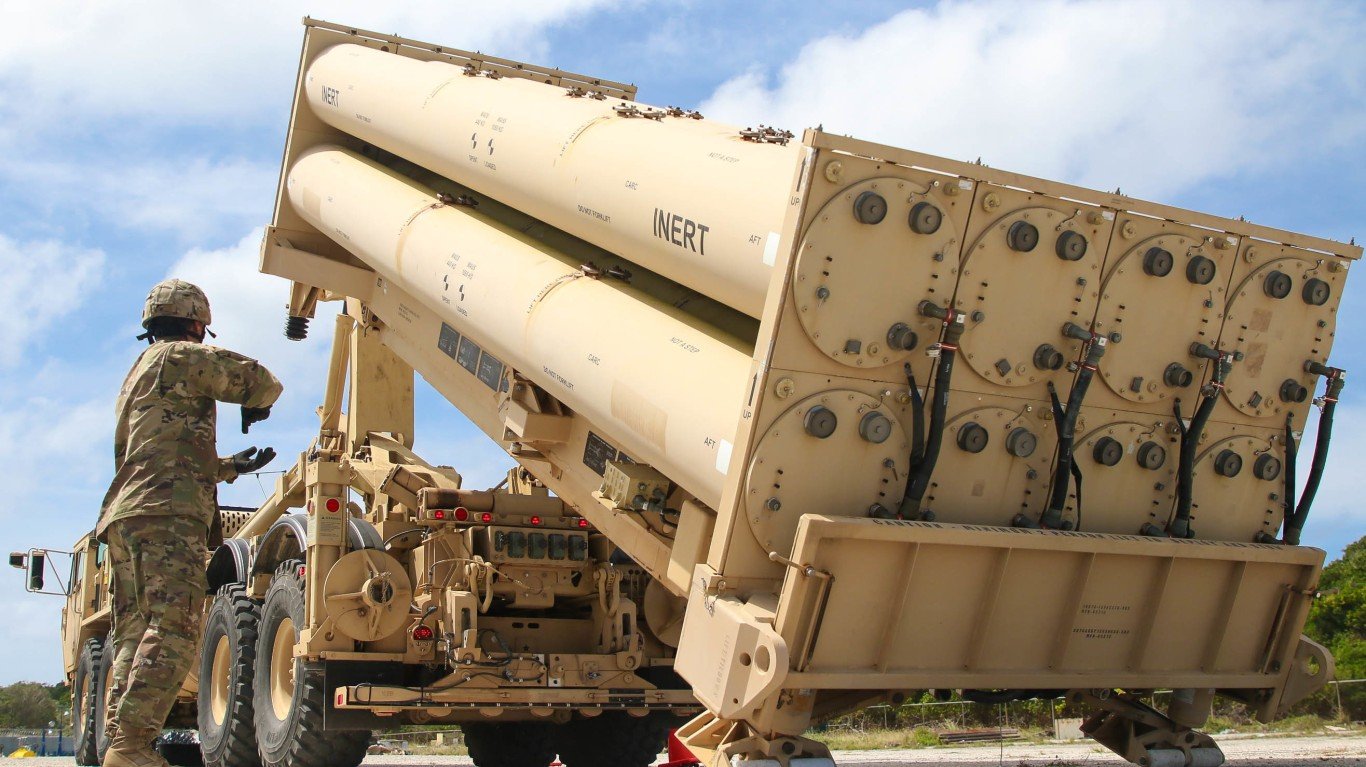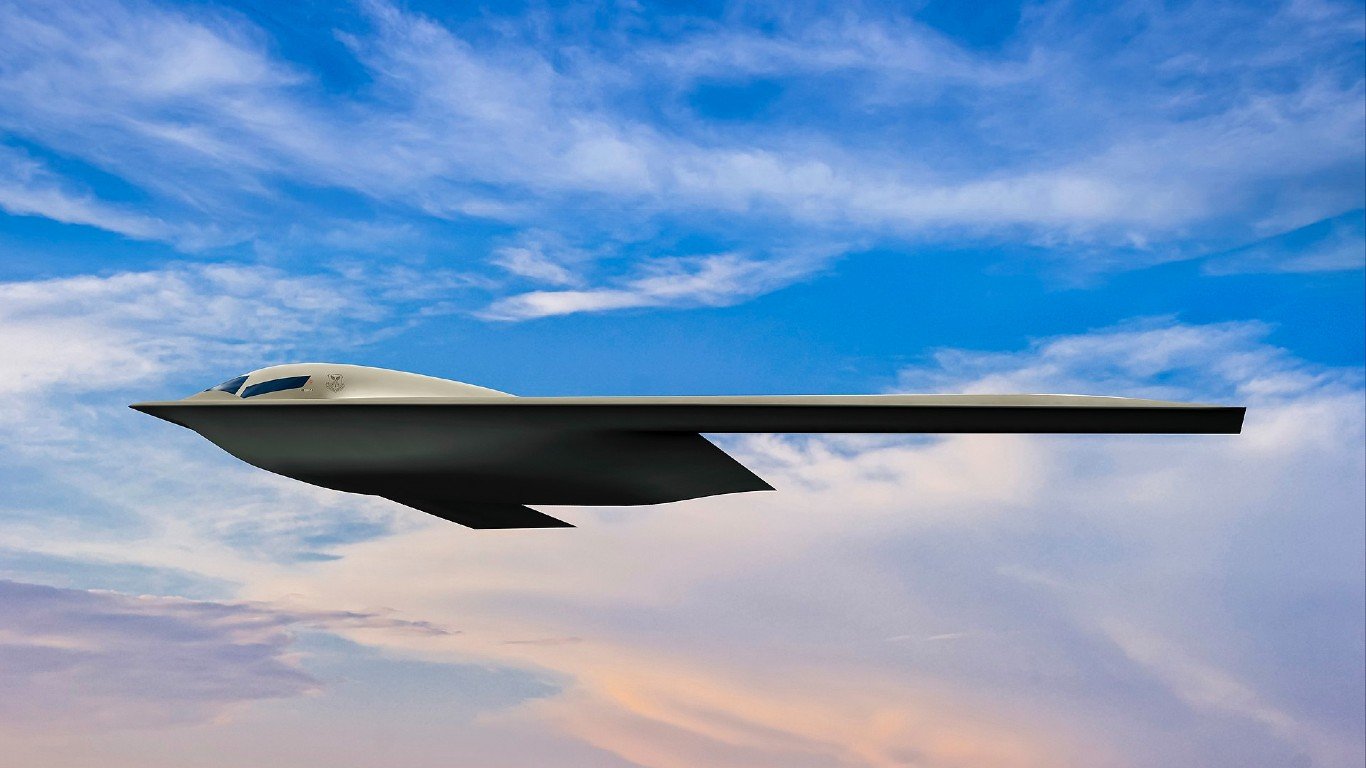

The U.S. military prioritizes maintaining a technological edge in defensive technology to safeguard national security, but this requires a tremendous amount of money. The Department of Defense (DOD) requested $842 billion for the fiscal year 2024, which is $26 billion more than in 2023.
The proposed budget allocates funds to various weapons systems, from destroyers and ships to missiles, fighter jets, and nuclear technology. An example of this is the Arleigh Burke-class destroyers, where research and development, testing, and evaluation (RDT&E) for upgrades on a single destroyer cost over $700 million in the past three years. (This is the country with the most nuclear weapons.)
While the Arleigh Burke destroyer program spent $17.3 billion on the program over the last three years (See the U.S. military’s 36 oldest weapons still in service.), the most expensive U.S. defense systems based on total spending over the three fiscal years ending in 2024 are Lockheed Martin’s Virginia-class attack submarine and the F-35 joint-strike fighter jet. By the end of fiscal year 2024, the F-35 fighter program’s total spending is projected to surpass $37 billion.
Based on the current RDT&E spending, the Overhead Persistent Infrared Space-Based Missile Warning System is the most expensive U.S. defense program. The OPIR polar-orbiting satellites will soon replace the existing network of satellite-based infrared sensors. However, this upgrade comes at a significant cost with a projected $11.8 billion, contributing to a total program cost exceeding $12.2 billion in these three years.
To identify the 30 weapons the U.S. spends billions on in research and development, 24/7 Wall St. reviewed the U.S. Department of Defense Budget FY 2024 Request. The DOD plans to allocate at least $700 million to each of these 30 defense systems over three fiscal years (ending September 2024). The list is ranked based on the total RDT&E expenditure planned for each system during this period.
Why We’re Writing About This
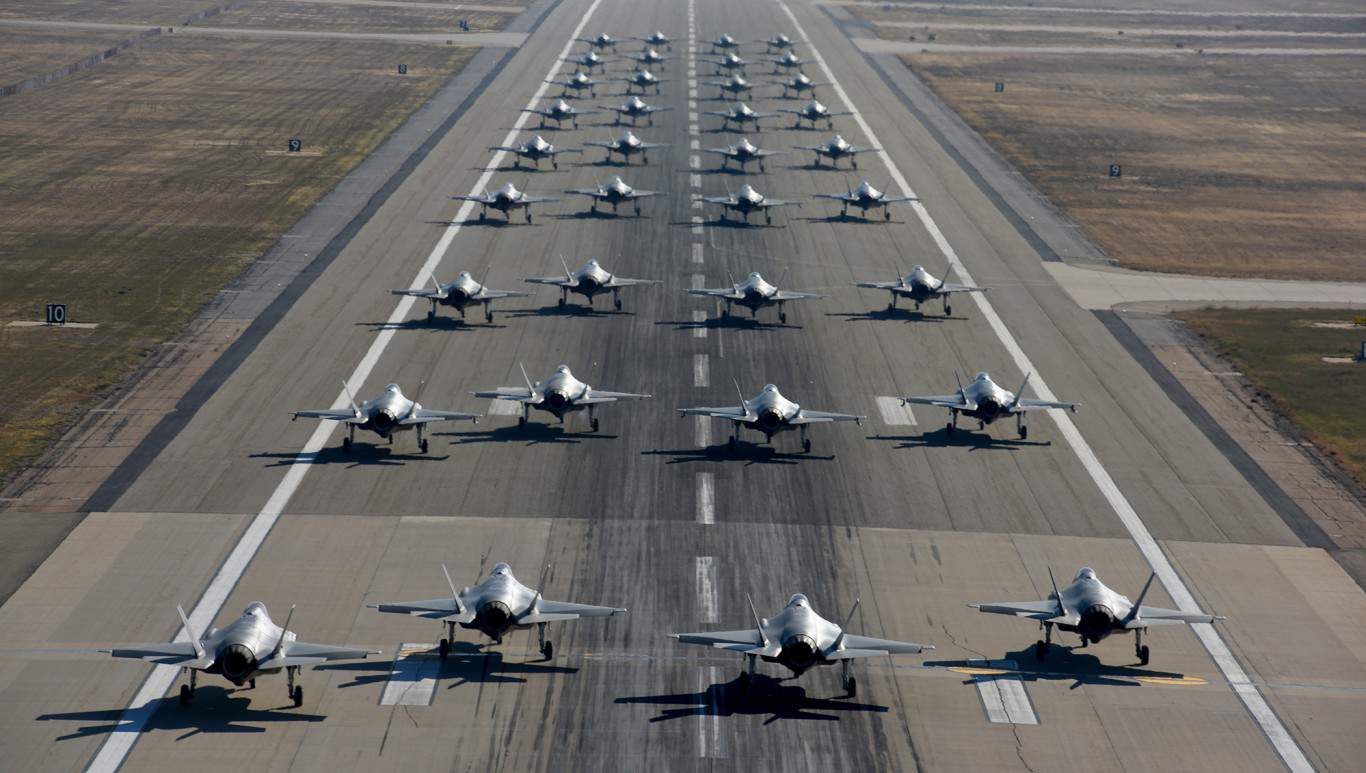
The United States military prioritizes continual efforts in the advancement and improvement of its defensive technology. In this article, we look at 30 of the most expensive weapon systems and R&D projects currently underway. Understanding these multi-billion dollar endeavors is crucial for anyone interested in national security, technological innovation, and the economic realities of modern warfare. Our aim is to provide readers with a comprehensive view of the scope of U.S. investment in national defense and the cutting-edge technologies under development today.
Here are America’s Multi-Billion Dollar R&D Weapons
30. DDG 51 Arleigh Burke Class Destroyer
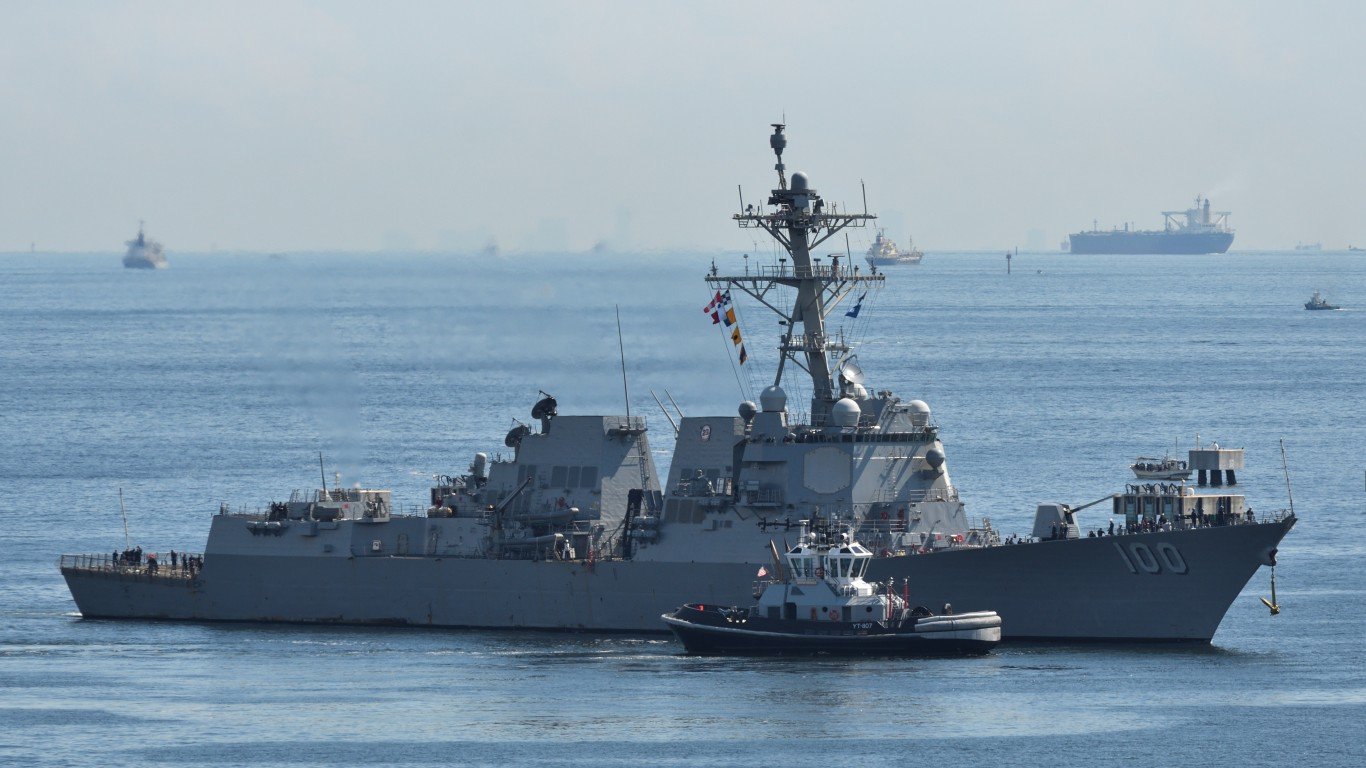
Over the past three fiscal years, the Department of Defense allocated a budget of $702.7 million for research and development, testing, and evaluation of Freedom-class ships for the Navy. Total DOD program spending on these ships from FY2022-2024 came to $17.3 billion, the fourth most expensive weapon system in the defense budget. General Dynamics and Huntington Ingalls are the primary contractors making these.
Department of Defense FY2024 budget description: “The Arleigh Burke-class (DDG 51) guided missile destroyers provide a wide range of warfighting capabilities in multi-threat air, surface, and subsurface environments. The DDG 51 class is armed with a vertical launching system, which accommodates 96 missiles, and a 5-inch gun that provides Naval Surface Fire Support to forces ashore and anti-ship gunnery capability against other ships. This is the first class of destroyers with a ballistic missile defense capability.”
29. Precision Strike Missile
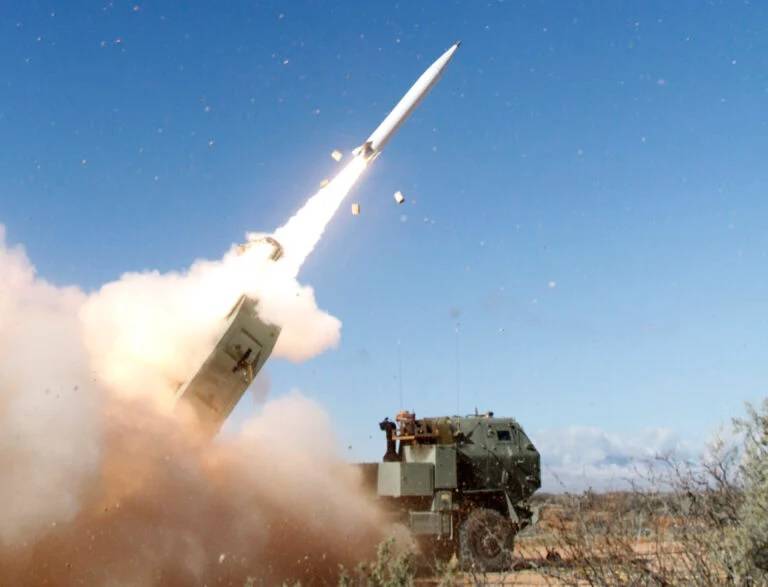
Over the past three fiscal years, the DOD allocated $713.8 million for research and development, testing, and evaluation of precision strike missiles for the Army. From FY2022-2024 the total DOD spending on these missiles came to $1.4 billion, the twenty-seventh most expensive weapon system in the defense budget. Lockheed Martin Missiles and Fire Control are the primary contractors making these missiles.
Department of Defense FY2024 budget description: “The Precision Strike Missile (PrSM) is the Army’s next-generation surface-to-surface ballistic missile that replaces and improves upon the Army Tactical Missile System. (ATACMS) PrSM will provide Joint Force Commanders with a 24/7, all-weather capability to attack critical and time-sensitive area and point targets including threat air defense; missile launchers; command and control centers; assembly/staging areas; and high payoff targets at all depths of the multidomain battlefield.”
28. MQ-25 Stingray

The DOD allocated a $732.7 million budget on research and development, testing, and evaluation for MQ-25 Stingray drones for the Navy and Marine Corps over the past three fiscal years. The total DOD program spending on these ships from FY2022-2024 came to $2.5 billion, the twenty-fourth most expensive in the defense budget. The primary contractors making these drones are Boeing and Lockheed Martin.
Department of Defense FY2024 budget description: “The U.S. Navy MQ-25A Stingray and the Unmanned Carrier Aviation Mission Control System programs are rapidly developing an unmanned capability to embark as part of the Carrier Air Wing for aerial refueling and Intelligence, Surveillance, and Reconnaissance missions.”
27. Medium and Large Unmanned Surface Vessels (USV)

Over the past three fiscal years, the DOD’s budget for research and development, testing, and evaluation of The Unmanned Surface Vessels (USV) for the Navy was $756.6 million. In total, DOD program spending from FY2022-FY2024 came to $0.8 billion, the thirtieth most expensive weapon system in the defense budget. The primary contractors making these are to be determined.
Department of Defense FY2024 budget description: “The Unmanned Surface Vessel (USV) is a multi-mission vessel designed to provide low cost, high endurance, reconfigurable ships that can accommodate various payloads for unmanned missions and augment the Navy’s manned surface force. While unmanned surface vehicles are new additions to fleet units, they are intended to be relatively low developmental technologies that combine robust and proven commercial vessel designs with existing military payloads to rapidly and affordably expand the capacity and capability of the surface fleet.”
26. National Security Space Launch (NSSL) Program and Rocket System Launch Program (RSLP)
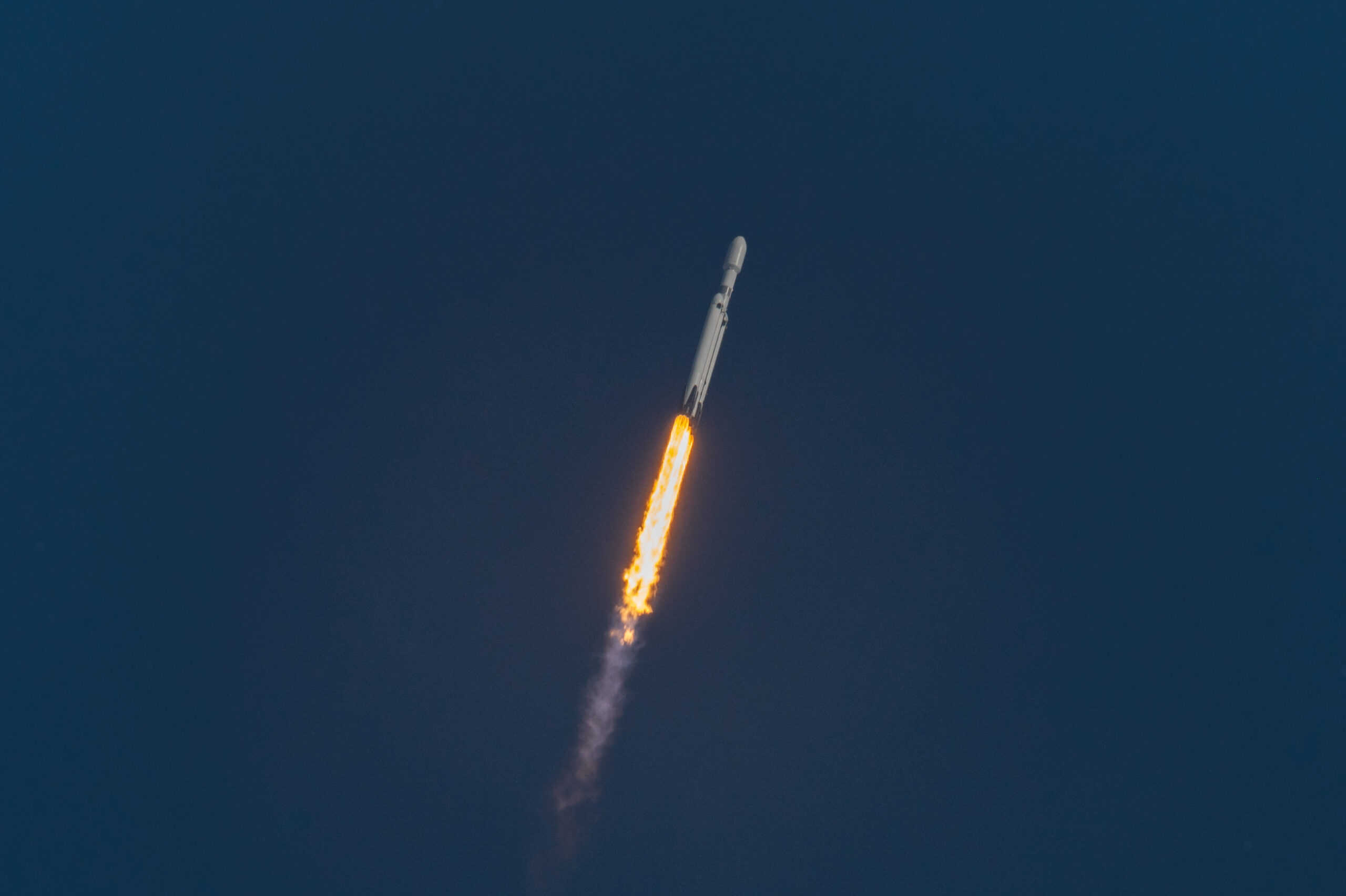
The DOD’s budget for research and development, testing, and evaluation budget for the National Security Space Launch (NSSL) Program and Rocket System Launch Program (RSLP) was $761.7 million over the last three fiscal years. The total DOD spending on these programs from FY2022-2024 came to $7.0 billion, the twelfth most expensive weapon system in the defense budget. The primary contractors making these launch services for the Space Force are to be determined.
Department of Defense FY2024 budget description: “The Space Forces’ Launch Enterprise consists of the National Security Space Launch program and Rocket System Launch Program. NSSL provides highly reliable launch services for medium and heavy lift class national security satellites.”
25. Terminal High Altitude Area Defense (THAAD)
Over the past three fiscal years, the DOD allocated $774.6 million to research and development, testing, and evaluation of the Terminal High Altitude Area Defense (THAAD). From FY 2022-2024, the DOD spent $1.6 billion on this missile defense system, the twenty-sixth most expensive weapon system in the defense budget. Lockheed Martin was the primary contract on this joint service defense system.
Department of Defense FY2024 budget description: “The Terminal High Altitude Area Defense (THAAD) is a key element of the missile defense system. The THAAD Battery provides interceptors, using “Hit-To-Kill” technology to destroy missiles inside and outside the atmosphere. A Battery nominally consists of 6 truck-mounted launchers, 48 Interceptors (8 per launcher), one Army/Navy Transportable Radar Surveillance and radar, a Tactical Fire Control/Communications component, and the Heavy Expanded Mobility Tactical Trucks.”
24. MQ-4C / RQ-4 Triton/Global Hawk/NATO AGS
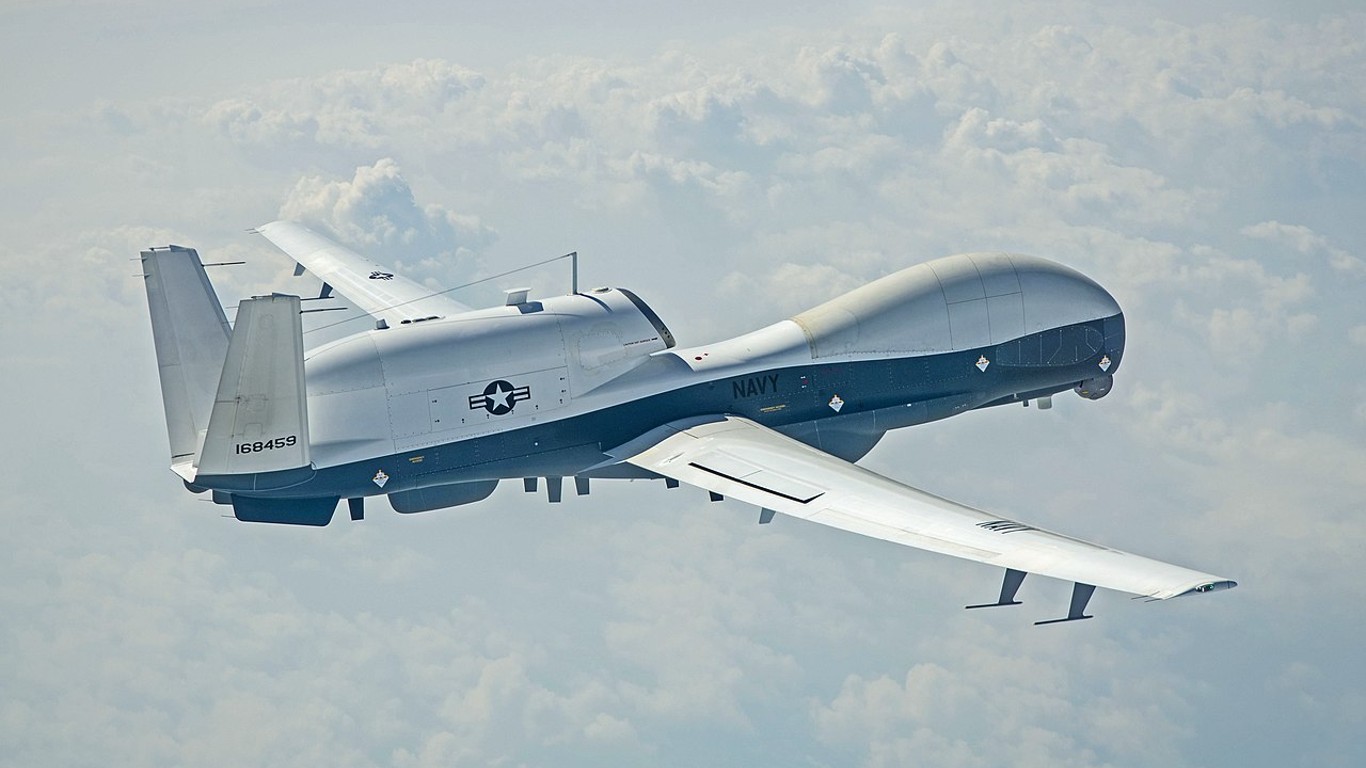
The DOD allocated $796.5 million for the research and development, testing, and evaluation of MQ-4C / RQ-4 Triton/Global Hawk/NATO AGS from FY 2022-2024. $2.6 billion was spent in total during the past three fiscal years, the twenty-second most expensive weapon system in the defense budget. The primary contractor for these joint service drones is Northrop Grumman.
Department of Defense FY2024 budget description: “The Navy MQ-4C Triton, U.S. Air Force RQ-4 Global Hawk, and NATO Alliance Ground Surveillance Unmanned Aircraft Systems provide high altitude long endurance Intelligence, Surveillance, and Reconnaissance capabilities.”
23. Trident II Ballistic Missile Modifications
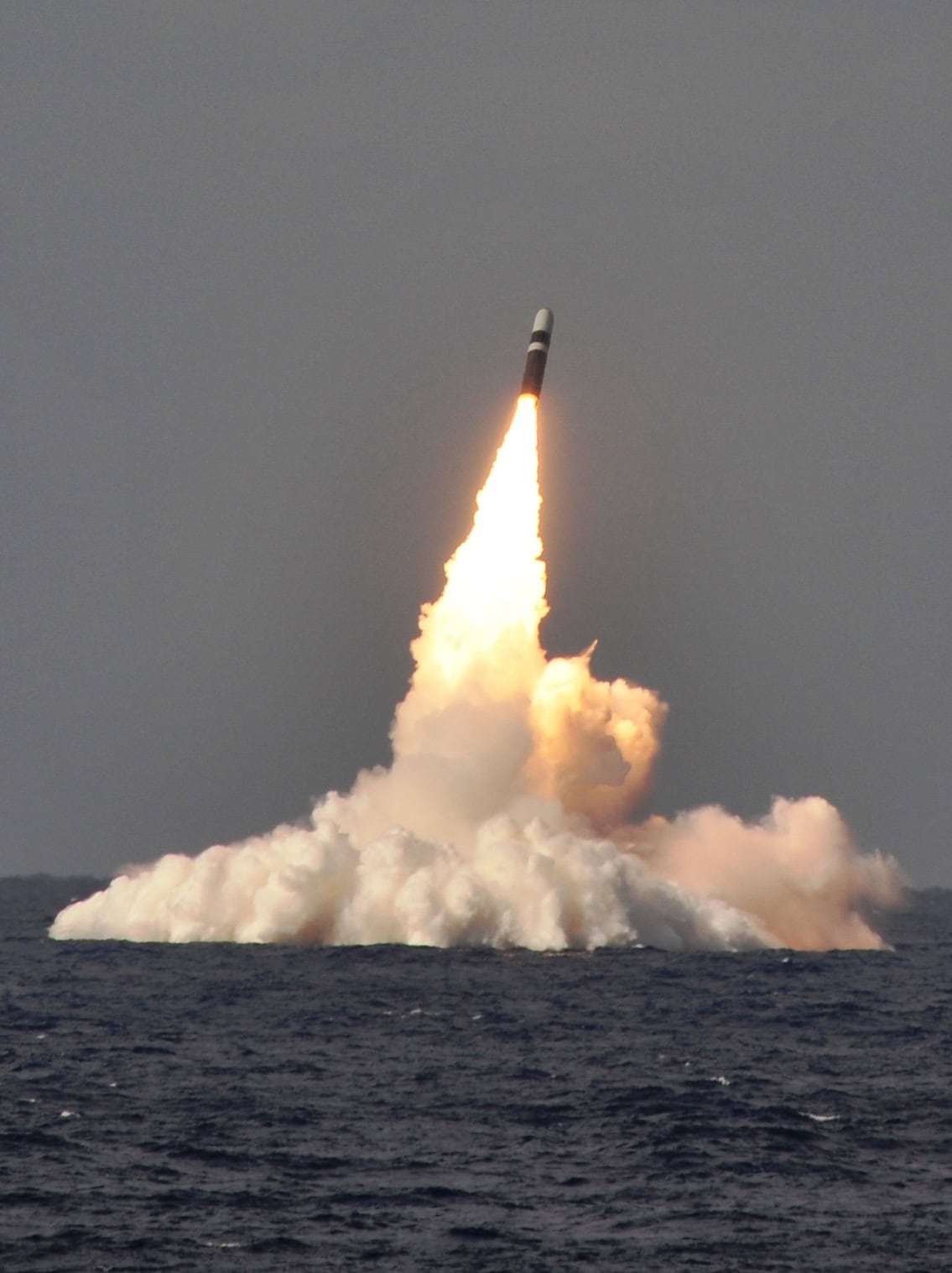
Over the past three fiscal years, the DOD budgeted $825 million for research and development, testing, and evaluation for modifications on the Trident II Ballistic Missile. Total DOD spending on this ballistic missile from FY2022-2024 came to $5.2 billion, the fifteenth most expensive weapon system in the defense budget. Lockheed Martin is the primary contractor making these ballistic missiles for the Navy.
Department of Defense FY2024 budget description: “Supports the production of the redesigned missile which will be deployed on the COLUMBIA-class Fleet Ballistic Missile Submarine. Funds support the procurement of Trident II D5LE warhead components, the Mk4B Shape Stable Nose Tip (SSNT), and the replacement of D5 legacy tooling and test support equipment. Development efforts of the D5LE2 include system studies and architecture development, W93/Mk7 warhead feasibility study and design options, as well as the Submarine Launched Ballistic Missile (SLBM) and strategic guidance technologies to deliver a System Requirements Review in FY 2025.”
22. F-15 Eagle
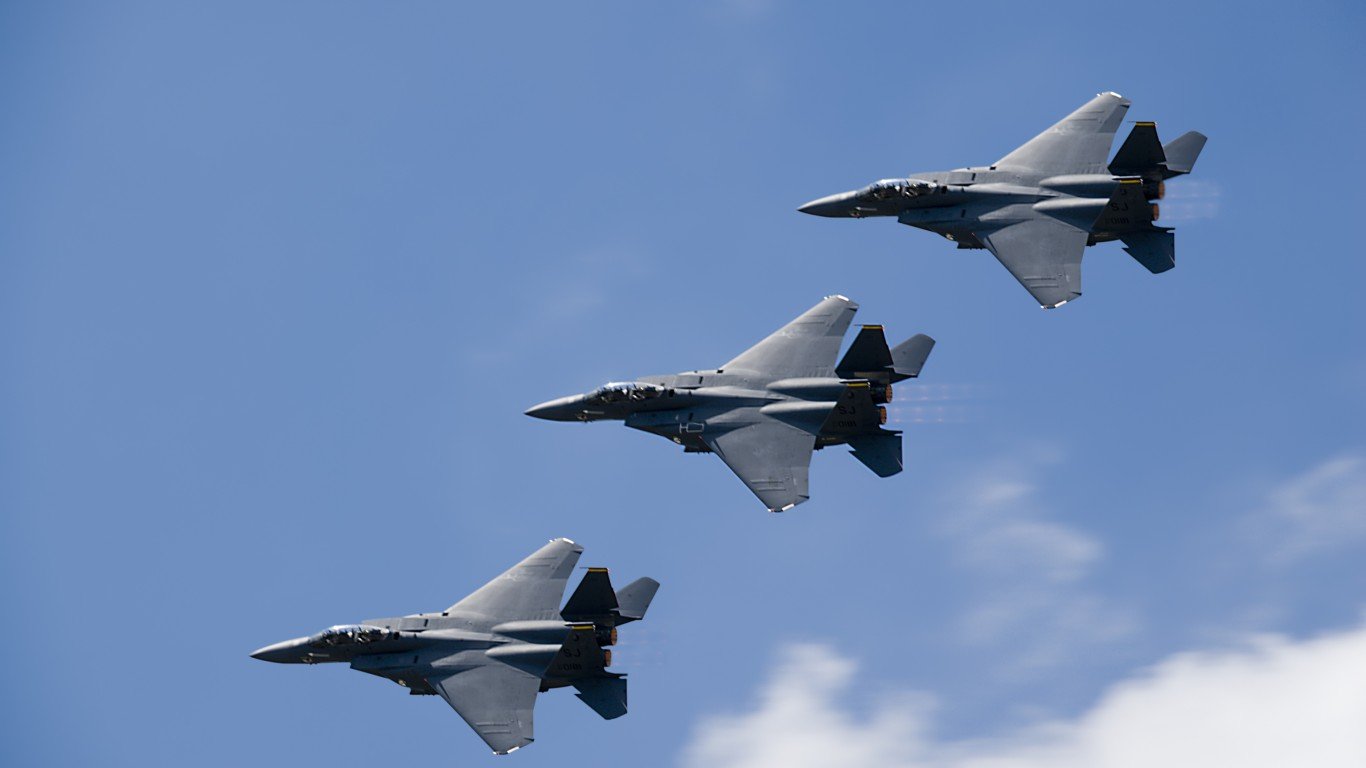
The DOD budget for F-15 Eagle fighter jets was $848.9 million from FY 2022-2024. Over the past three fiscal years, total spending on this project for the Air Force was $8.8 billion, the tenth most expensive weapon system in the defense budget. Lockheed Martin is the primary contractor.
Department of Defense FY2024 budget description: “The F-15EX is a modernized derivative of the F-15E with advanced flight controls, superior sensors, and increased weapons capacity and range needed to defend critical locations in highly contested environments. Continues engineering and manufacturing development efforts for the Eagle Passive/Active Warning Survivability System to improve F-15E/EX survivability by enhancing the ability to detect, deny, or defeat air and ground threats. Continues F-15E modernization investment, focusing development efforts on the Operational Flight Program and Resilient Embedded GPS-INS.”
21. F/A-18 Super Hornet

The F/A-18 Super Hornet project was allocated a budget of $916.8 million by the DOD from FY 2022-2024. Over the past three fiscal years, it has been the thirteenth most expensive weapons project in the defense budget with a total spending of $6.1 billion by the DOD. The fighter jets have been constructed for the Navy and Marine Corps, with Sikorsky Aircraft and General Electric as the primary contractors.
Department of Defense FY2024 budget description: “The F/A-18 E/F Super Hornet is a carrier-based multi-role tactical fighter and attack aircraft. Development and integration of critical aircraft systems, like the Infrared Search and Track (IRST) pod, continues to ensure the F/A-18 E/F can meet advanced threats expected in 2025 and beyond.”
20. SSN 774 Virginia Class Submarine
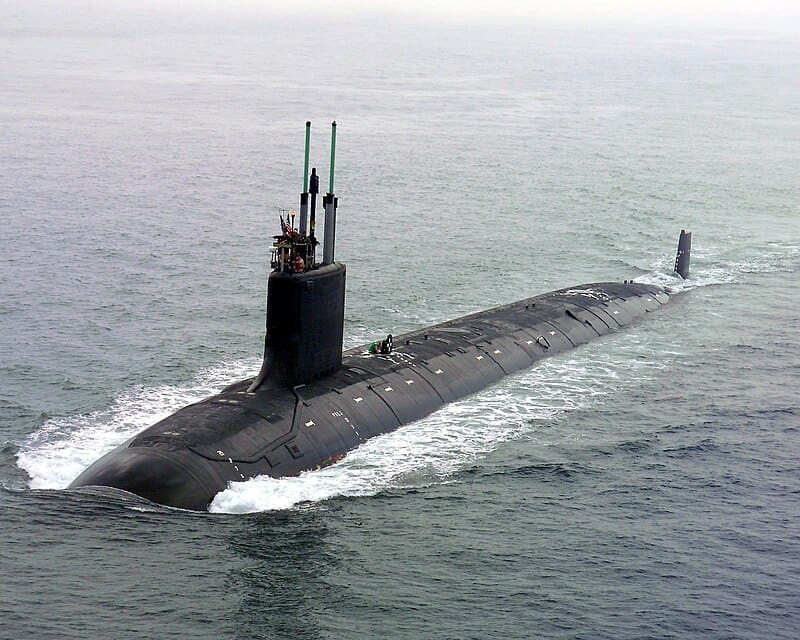
The SSN 774 Virginia Class Submarine for the Navy was given a budget of $994.7 million from FY 2022-2024. Total DOD spending on this submarine from FY2022-2024 came to $25.0 billion, the second most expensive weapon system in the defense budget. General Dynamics and Huntington Ingalls are the primary contractors making these.
Department of Defense FY2024 budget description: “The Virginia class submarine is a multimission nuclear-powered attack submarine… Equipped with vertical launchers and torpedo tubes, the submarine can launch Tomahawk cruise missiles and heavyweight torpedoes. Block V variants will incorporate Acoustic Superiority and the Virginia Payload Module (VPM), which is an 84-foot hull section with four additional payload tubes, each capable of carrying seven Tomahawk cruise missiles or various other payloads. FY 2024 continues funding development of the VPM technology, prototype components, and systems engineering required for design and construction.”
19. VC-25B Presidential Aircraft
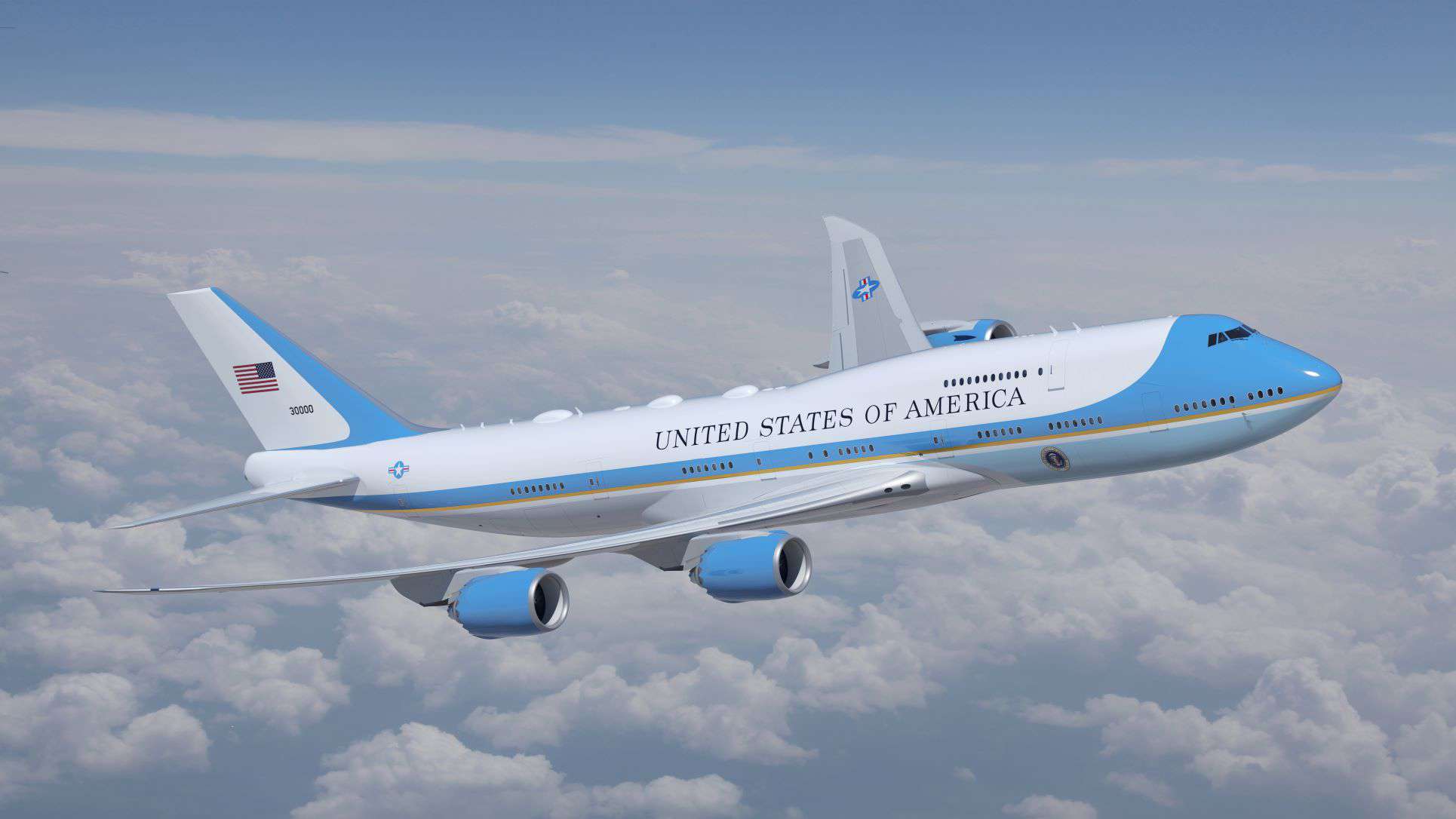
Over the past three fiscal years, the DOD allocated a budget of $1.0 billion for the research and development, testing, and evaluation of VC-25B Presidential Aircraft. Total DOD program spending from FY 2022-2024 came to $1.0 billion, the twenty-ninth most expensive weapon system in the defense budget. Boeing is the primary contractor for this new plane for the Air Force.
Department of Defense FY2024 budget description: “The VC-25B Presidential Aircraft Recapitalization program will replace the current VC-25A (Boeing 747-200) “Air Force One” aircraft with a new, modified 747-8. The VC-25B will provide the President, staff, and guests with safe and reliable air transportation at the same level of security and communications capability available in the White House. The modifications to the 747-8 aircraft will include an electrical power upgrade, dual auxiliary power units that are usable in flight, a mission communication system, an executive interior, military avionics, a self-defense system, autonomous enplaning and deplaning, and autonomous baggage loading.”
18. Standard Missile-6

Over the past three fiscal years, the DOD allocated $1.1 billion for research and development, testing, and evaluation of Standard Missile-6. Total DOD program spending from FY 2022-2024 came to $3.3 billion, the twentieth most expensive weapon system in the defense budget. Boeing Defense and Space is the primary contractor for this Navy missile.
Department of Defense FY2024 budget description: “The Standard Missile-6 (SM-6) is a surface Navy Anti-Air Warfare missile that provides area and ship self-defense. It was designed to fulfill the need for a vertically launched, extended-range missile compatible with the Aegis Weapon System to be used against extended-range threats at sea, near land, and overland. RDT&E funding continues Aegis architecture and design for SM-6 Block IB extended range capability…”
17. SSBN 826 Columbia Class Ballistic Missile Submarine
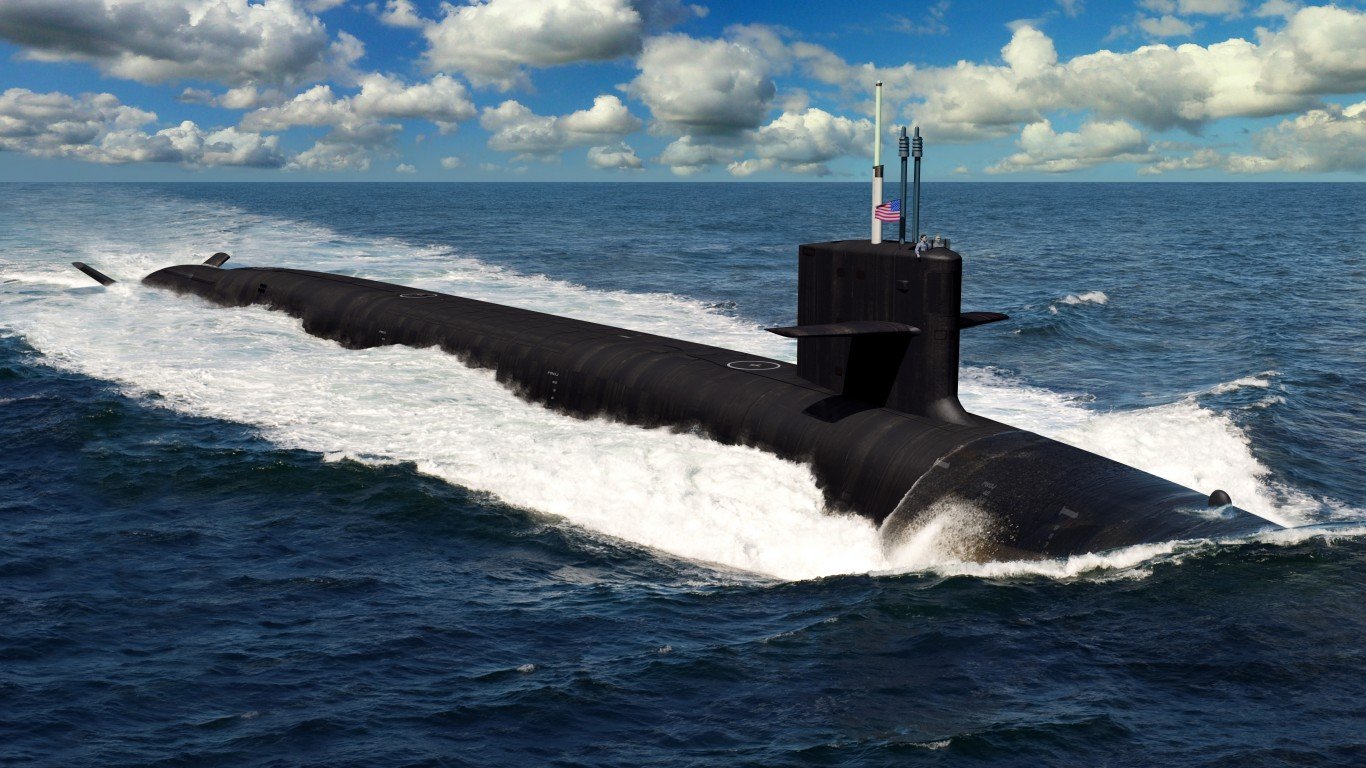
The DOD FY2022-2024 budget for research and development, testing, and evaluation of the SSBN 826 Columbia Class Ballistic Missile Submarine was $1.1 billion. Over the past three fiscal years, total DOD project spending came to $17.6 billion, the third most expensive weapons program in the defense budget. Bechtel National is the primary contractor for these submarines for the Navy.
Department of Defense FY2024 budget description: “The Columbia class Ballistic Missile Submarine (SSBN) will replace the current Ohio class of Fleet Ballistic Missile Submarine. The USS Columbia program will deliver 12 SSBNs… FY 2024 also continues funding research and development of nuclear technologies and ship systems such as the propulsion system, combat systems technology, and the development and construction of a Common Missile Compartment (CMC) capable of hosting the TRIDENT II missile system.”
16. E-7A Airborne Warning and Control System Replacement

From FY 2022-2024 the DOD allocated a budget of $1.1 billion to the research and development, testing, and evaluation of the E-7A Airborne Warning and Control System Replacement. Total DOD program spending came to $1.1 billion, the twenty-eighth most expensive weapon project in the defense budget. Boeing is the primary contractor making these planes for the Air Force.
Department of Defense FY2024 budget description: “The E-7A program will replace the current E-3G Airborne Warning and Control System (AWACS) aircraft. The E-7A is an airborne early warning and control platform based on the Boeing (737-700) next-generation design powered by twin CFM International CFM56-7 turbofan engines. The E-7A provides improved kill-chain effectiveness, as well as enhanced survivability, reliability, and availability. The E-7A’s Multifunction Electronically Scanned Array (MESA) can be electronically steered, which provides better target detection and tracking, and more robust electronic protection.”
15. E-2D Advanced Hawkeye
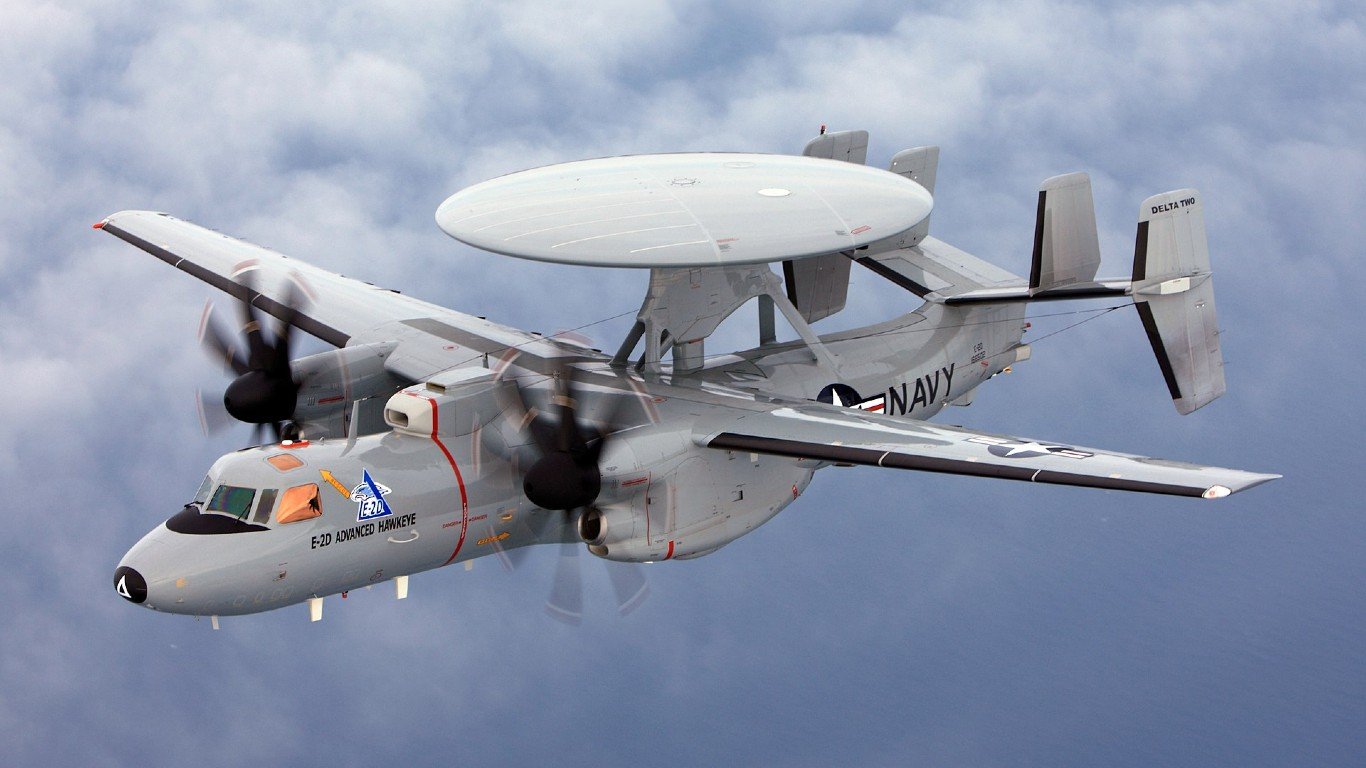
Over the past three fiscal years, the DOD allocated a budget of $1.2 billion for the research and development, testing, and evaluation of the E-2D Advanced Hawkeye. Total DOD program spending from FY 2022-2024 came to $3.5 billion, the eighteenth most expensive weapon system in the defense budget. These planes are made for the Navy and Marine Corps by Northrop Grumman, Rolls-Royce, and Lockheed Martin.
Department of Defense FY2024 budget description: “The E-2D Advanced Hawkeye is an airborne early warning, all-weather, twin-engine, carrier-based aircraft designed to extend task force defense perimeters.”
14. PATRIOT / PAC–3 PATRIOT Advanced Capability
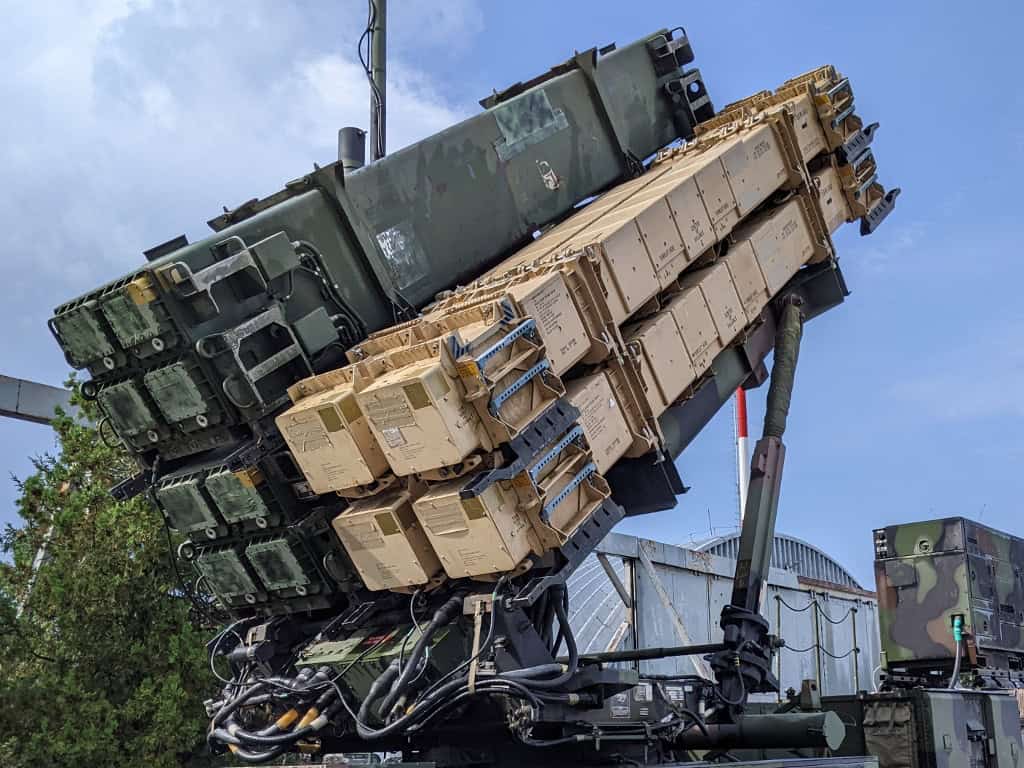
The DOD allocated a budget of $1.5 billion over the past three fiscal years for research and development, testing, and evaluation of the PATRIOT / PAC-3 PATRIOT advanced capabilities for the Army. From FY 2022-2024, DOD total program spending came to $2.8 billion, the twenty-first most expensive weapon system in the defense budget. Lockheed Martin and Northrop Grumman are the primary contractors making these missile systems.
Department of Defense FY2024 budget description: “The Army’s Phased Array Tracking Radar to Intercept of Target (PATRIOT) system is an extremely capable, long-range air defense guided missile system, which protects ground combat forces and high-value assets… Implements critical capability, readiness, and sustainability modifications and continues software enhancement for improved combat identification, improved communications, interoperability, supportability, and electronic warfare capabilities; and supports the transition to the Integrated Air and Missile Defense architecture.”
13. Optionally Manned Fighting Vehicle (OMFV)
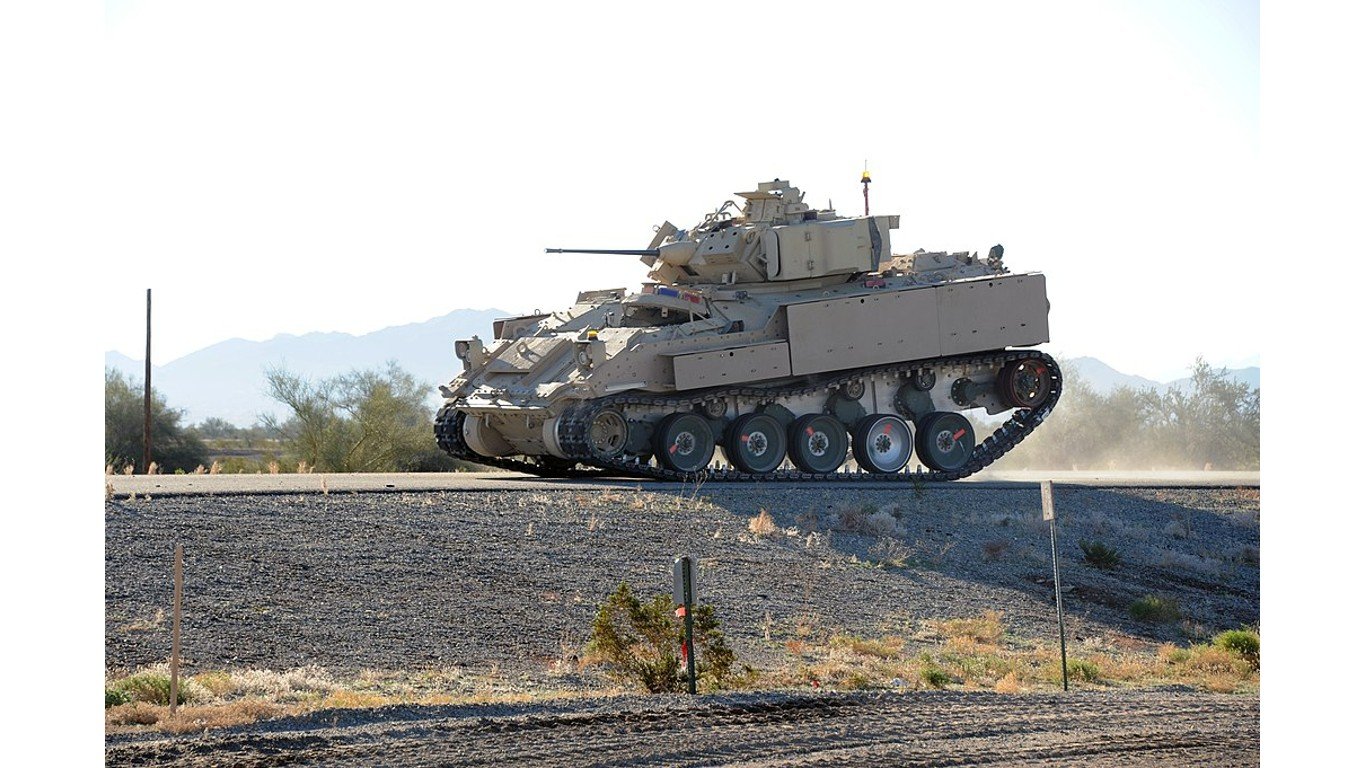
Over the past three fiscal years, the DOD’s budget for research and development, testing, and evaluation of the Optionally Manned Fighting Vehicle (OMFV) was $1.7 billion. From FY 2022-2024, total DOD program spending came to $1.7 billion, the defense budget’s twenty-fifth most expensive weapon program. The primary contractors for these Army vehicles is to be determined.
Department of Defense FY2024 budget description: “The Optionally Manned Fighting Vehicle (OMFV) will replace the Bradley Infantry Fighting Vehicle and provide increased warfighting capability required to defeat future near-peer competitors… Funds the fully digital, detailed prototype vehicle designs from Preliminary Design Review (PDR) through to the Critical Design Review (CDR) in preparation for the prototype builds and testing portion of Phase 3&4 in the program’s development.”
12. F-22 Raptor
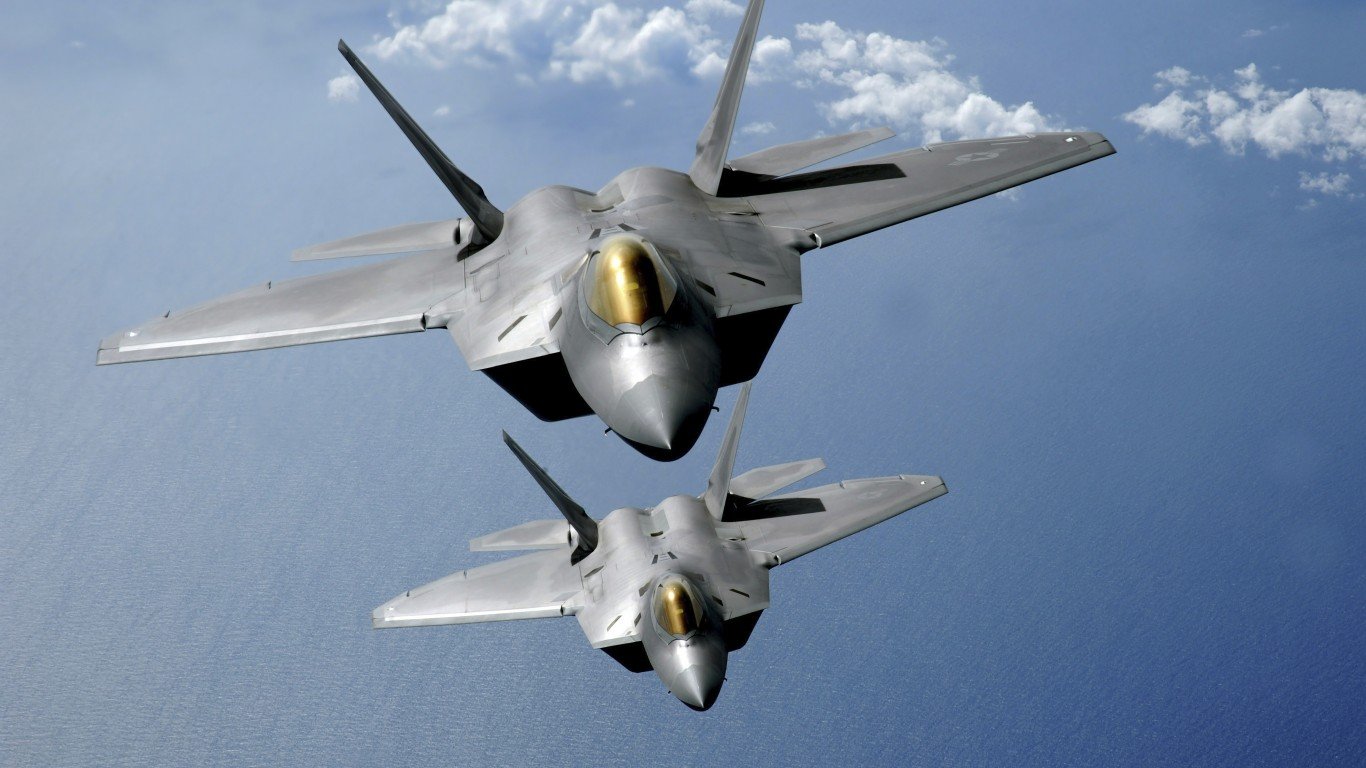
From FY 2022-2024, the DOD allocated a budget of $1.9 billion for the research and development, testing, and evaluation of F-22 Raptor fighter jets for the Air Force. Total DOD program spending came to $3.9 billion, the seventeenth most expensive weapon program in the defense budget. Boeing is the primary contractor making these.
Department of Defense FY2024 budget description: “The F-22 Raptor is a fifth-generation air superiority fighter aircraft. The Raptor is designed to penetrate enemy airspace and achieve first-look, first-shot, first-kill capability against multiple targets. Continues deliberate investments via the Raptor Agile Capability Release program to ensure F-22s are upgraded with state-of-the-art sensors, improved survivability, enhanced interoperability, and extended range and time on station.”
11. Aegis Sea-Based Weapons System
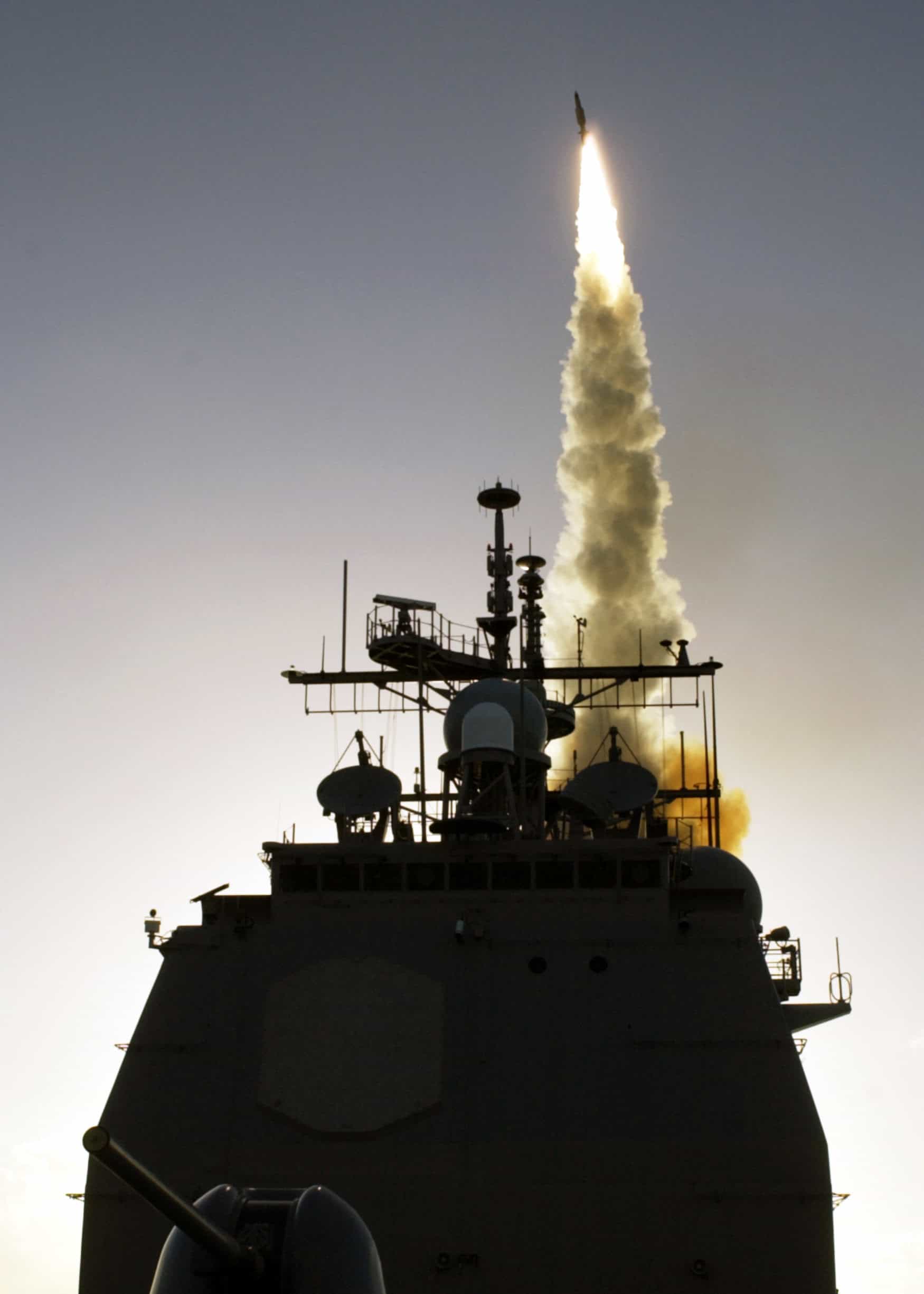
Over the past three fiscal years, the DOD allocated a $2.4 billion budget to research and development, testing, and evaluation of the Aegis Sea-Based Weapons System. Total DOD program spending from FY 2022-2024 came to $5.3 billion, the defense budget’s fourteenth most expensive weapon system. Boeing is the primary contractor making this joint-service missile system.
Department of Defense FY2024 budget description: “Sea-Based Weapons System (Aegis Ballistic Missile Defense (BMD)) is the naval element of the missile defense system and provides an enduring, operationally effective, and supportable missile defense capability on Aegis cruisers, destroyers, and Ashore to defend U.S. deployed forces and our allies.”
10. Long Range Stand-Off Weapon (LRSO)
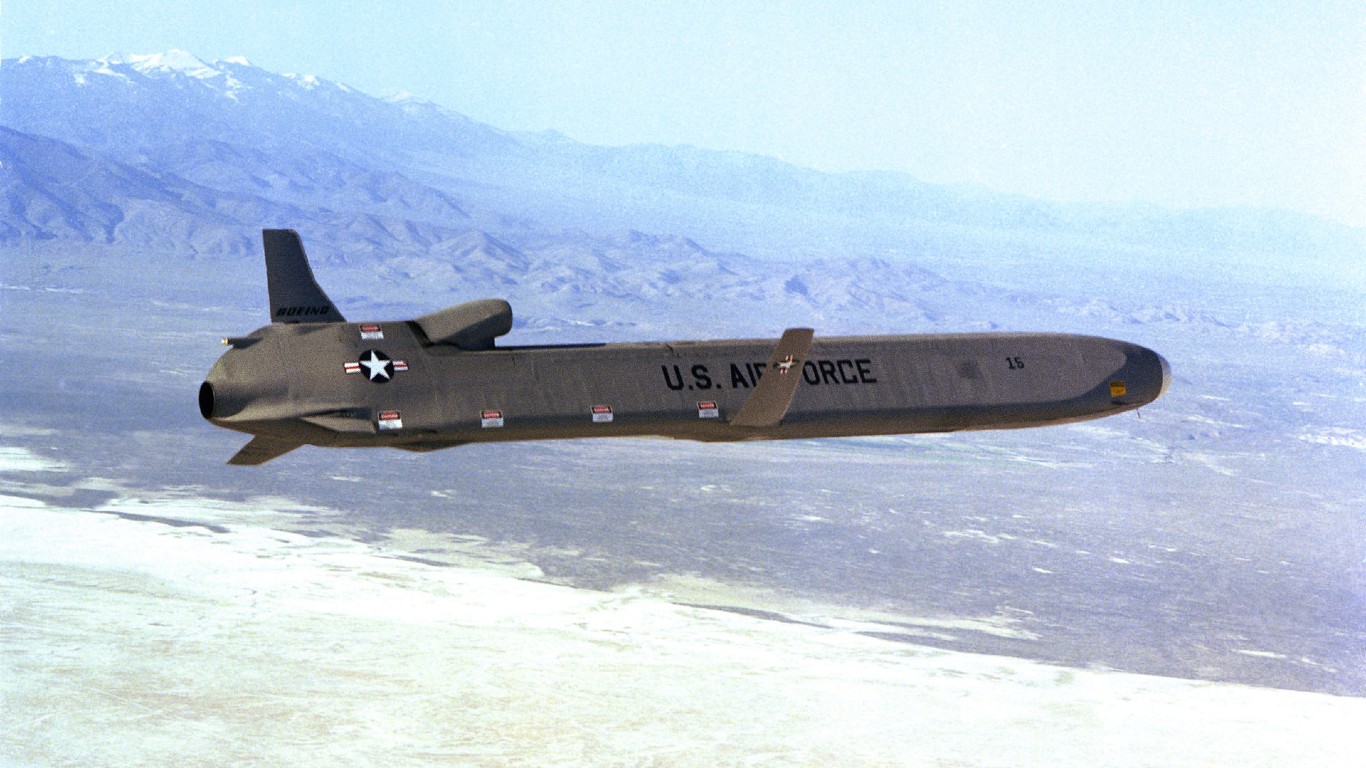
The DOD allocated a $2.4 billion budget for research and development, testing, and evaluation of Long Range Stand-Off Weapons (LRSO). Total DOD program spending from FY 2022-2024 came to $2.5 billion, the twenty-third most expensive in the defense budget. Raytheon is the primary contractor making these missiles for the Air Force.
Department of Defense FY2024 budget description: “Long Range Stand-Off (LRSO) Weapon is a nuclear cruise missile capable of penetrating and surviving complex advanced integrated air defense systems and GPS-denied environments from significant stand-off ranges. The LRSO replaces the Air Launched Cruise Missile (ALCM) which entered service in 1982 and is well past its original 10-year service life design. The program entered the Engineering and Manufacturing Development (EMD) phase in July 2021. Initial operational capability is projected for 2030.”
9. B-1, B-2, B-52 Bombers

From FY 2022-2024, the DOD’s allocated budget for research and development, testing, and evaluation of B-1, B-2, and B-52 Bombers was $2.7 billion. Over the past three fiscal years, total DOD program spending came to $3.3 billion, the nineteenth most expensive weapon system in the defense budget. Northrop Grumman is the primary contractor making these planes for the Air Force.
Department of Defense FY2024 budget description: “Bombers provide an intercontinental capability to rapidly strike surface targets. The Air Force legacy bomber fleet includes the B-1B, B-2, and B-52H aircraft. Continues upgrades to modernize legacy bombers including avionics, communications, radar, engine, and weapons efforts.”
8. Global Positioning System Enterprise
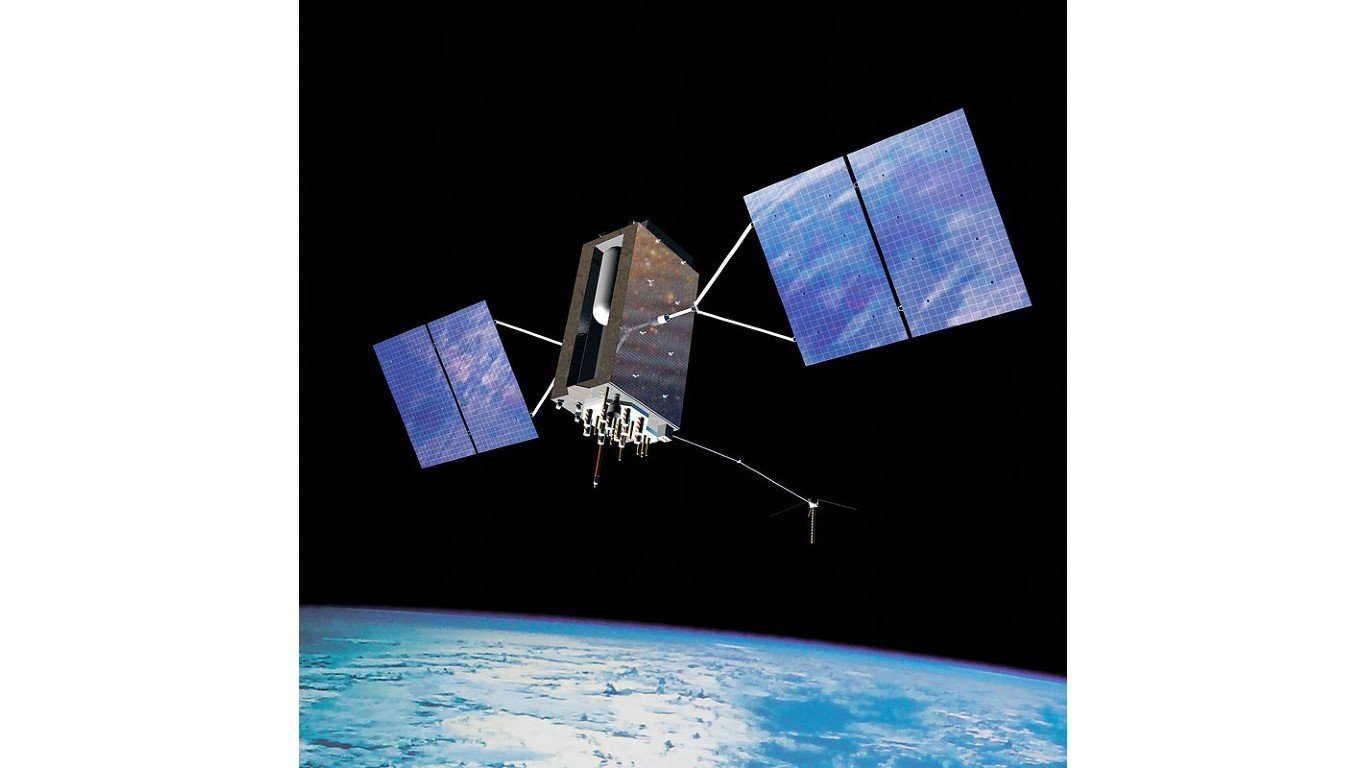
The DOD allocated $3.0 billion from FY 2022-2024 for research and development, testing, and evaluation of the Global Positioning System Enterprise. Total DOD program spending over the past three fiscal years came to $5.0 billion, the defense budget’s sixteenth most expensive weapon system. This GPS is made for the Space Force by various primary contractors.
Department of Defense FY2024 budget description: “The Global Positioning System (GPS) provides worldwide, 24-hour a day, all-weather 3-dimensional positioning, navigation, and timing (PNT) information for military and civilian users.”
7. F-35 Joint Strike Fighter
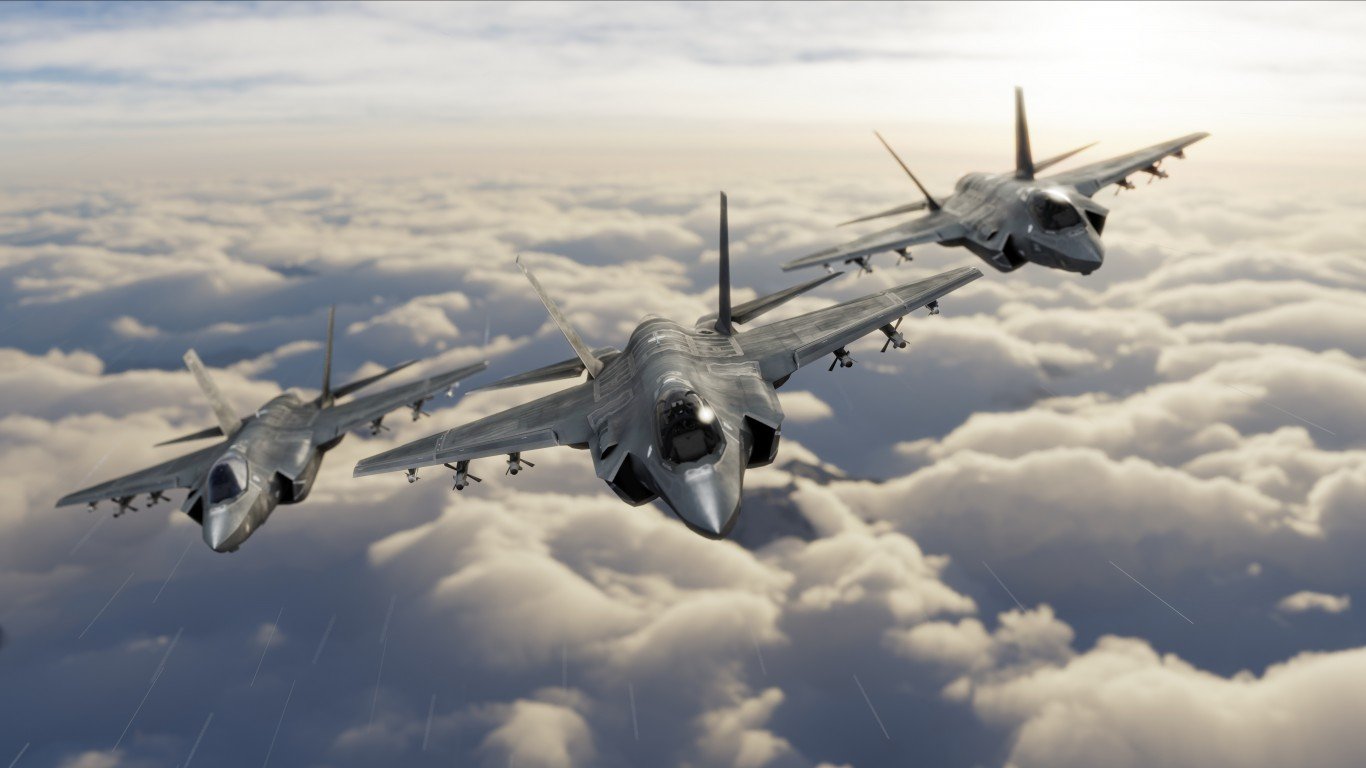
The F-35 Joint Strike Fighter Jet received a $6.7 billion DOD budget from FY 2022-2024 for research and development, testing, and evaluation. Over the past three fiscal years, total DOD program spending came to $37.1 billion, the top most expensive weapon system in the defense budget during that time. Lockheed Martin is the primary contractor making these joint-service fighter jets.
Department of Defense FY2024 budget description: “The F-35 Joint Strike Fighter (JSF) is a fifth-generation strike fighter for the Navy, Marine Corps, Air Force, and U.S. Allies. Continues systems engineering, development, and operational testing, and supports Continuous Capability Development and Delivery (C2D2) to provide incremental warfighting capability improvements to maintain joint air dominance against evolving threats.”
6. Ground-based Midcourse Defense (GMD)
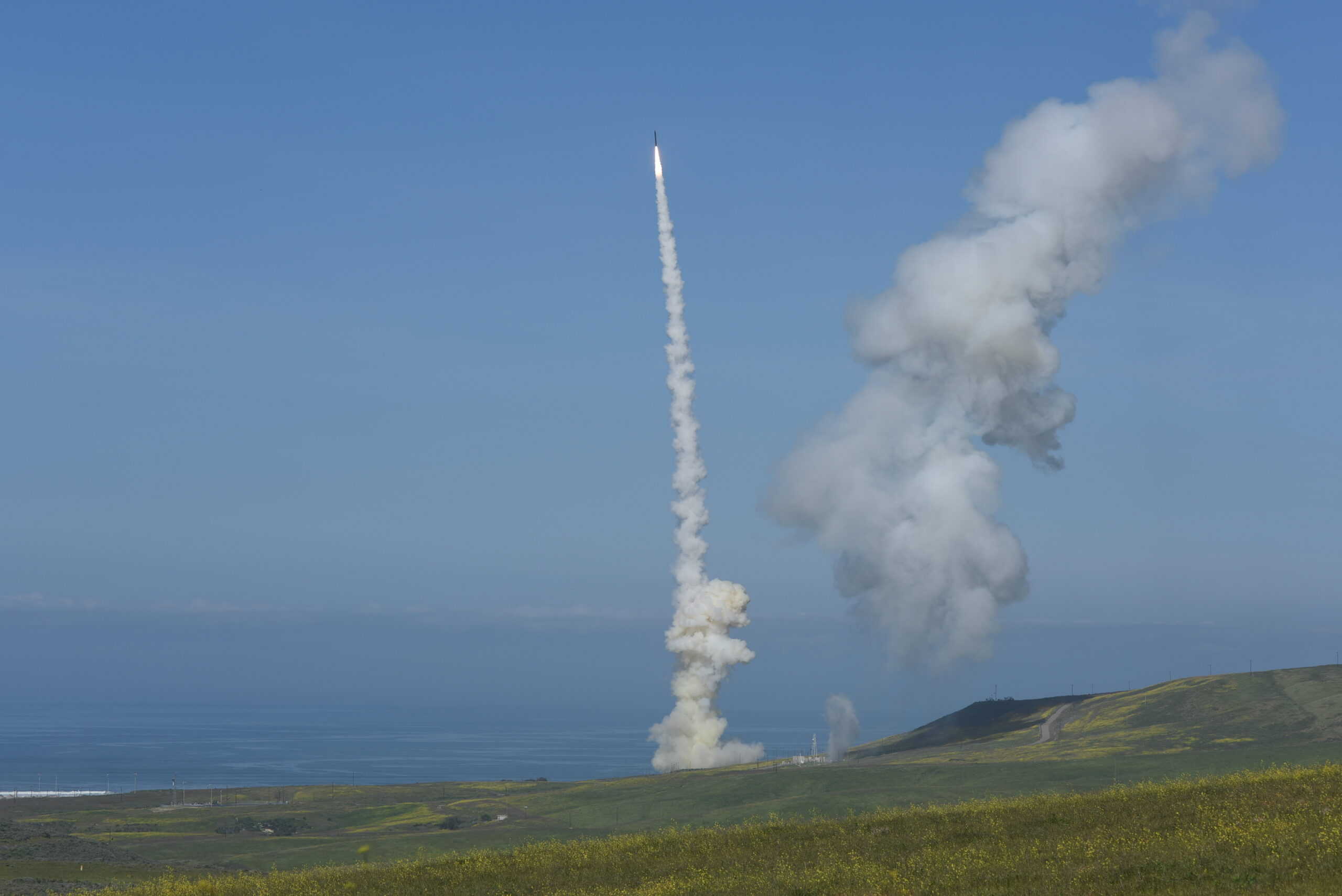
Over the past three fiscal years, the DOD allocated a budget of $7.3 billion for research and development, testing, and evaluation of Ground-Based Midcourse Defense (GMD). Total DOD program spending from FY 2022-2024 came to $7.3 billion, the eleventh most expensive weapon system in the defense budget. Raytheon Missiles & Defense is the primary contractor making this joint-service missile defense system.
Department of Defense FY2024 budget description: “The Ground-based Midcourse Defense (GMD) element is a Missile Defense Agency program and a key component of the Missile Defense System, providing Combatant Commanders with the capability to engage missiles in the midcourse phase of flight… Continues the design and development activities for two competitive interceptor development contracts. Next Generation Interceptor funding provides for the initial requirements analysis, design, development, prototyping, integration and relevant environment testing to mature the booster, payload, sensor, and design-specific critical technologies and technology elements.”
5. Cyberspace Activities

From FY 2022-2024, the DOD allocated $8.2 billion to research and development, testing, and evaluation of cyberspace activities. Total DOD spending over the past three fiscal years came to $10.7 billion, the eighth most expensive in the defense budget. Cybersecurity is provided for joint services, with various primary contractors.
Department of Defense FY2024 budget description: “Continues to accelerate multiple innovative lines of effort across the Department to support the DoD Cyber Strategy and facilitate information advantage throughout the spectrum of competition, crisis, and conflict. The resulting capabilities enhance integrated deterrence by enabling power projection in and through cyberspace, increasing our adversaries’ cyberspace operations cost and reducing their likelihood of success. The FY 2024 program continues investments in cybersecurity, cyberspace operations (including the cyber mission force), and cyber research and development.”
4. B-21 Raider
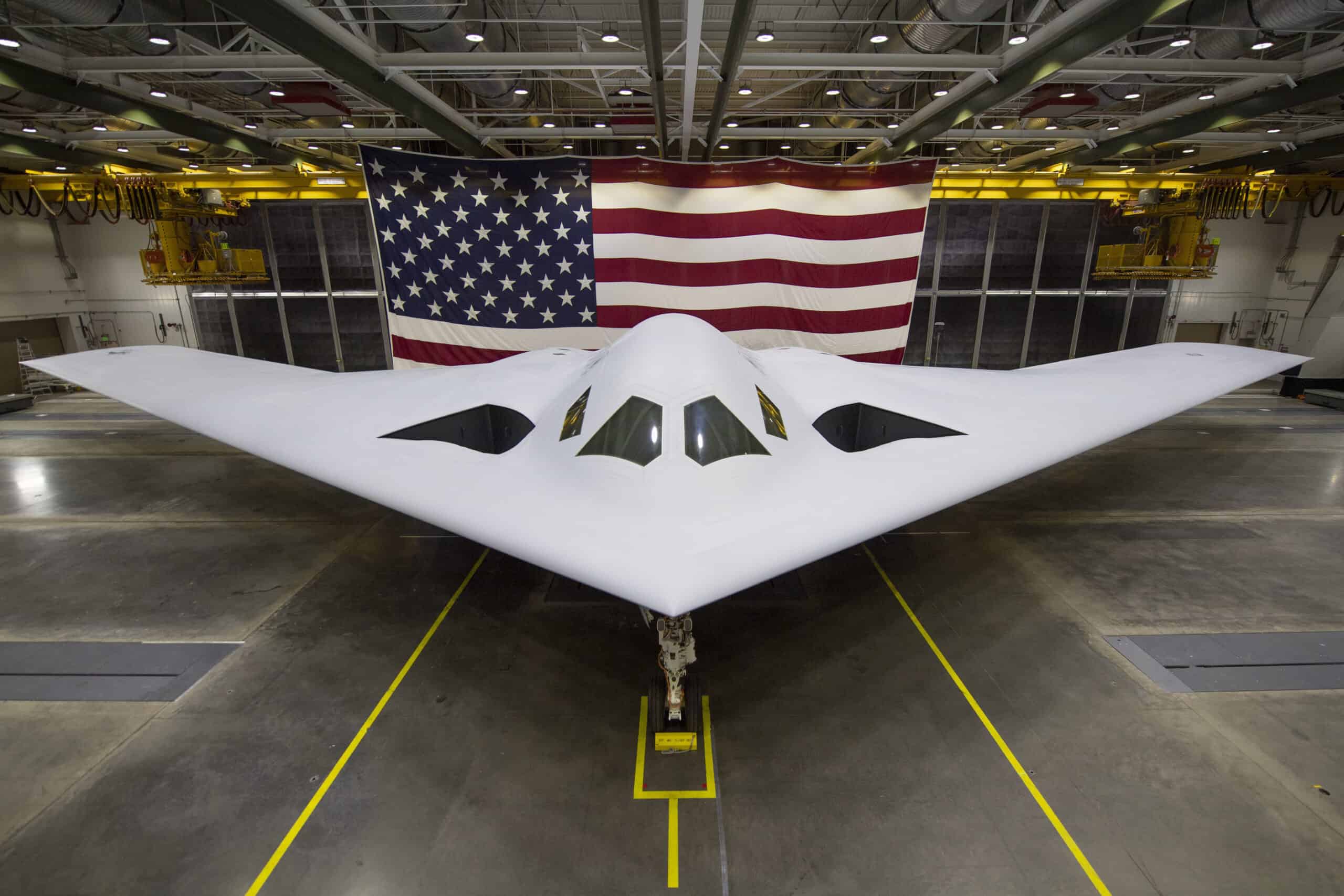
The DOD allocated a $8.9 billion budget for research and development, testing, and evaluation of the B-21 Raider. Total DOD spending from FY 2022-2024 came to $13.0 billion, the fifth most expensive weapon system in the defense budget. Oshkosh Defense and AM General are the primary contractors making these planes for the Air Force.
Department of Defense FY2024 budget description: “The B-21 Raider is a new, high-tech long-range bomber that will replace B-1 and B-2 bombers. The B21 will be a key component of the joint portfolio of conventional and nuclear-capable deep-strike capabilities. The B-21 will be delivered to operational bases in the mid-2020s. The Air Force plans to procure a minimum of 100 aircraft. Manufacturing of the test aircraft is underway at Northrop Grumman’s facility in Air Force Plant 42.”
3. Satellite Communications (SATCOM) Projects
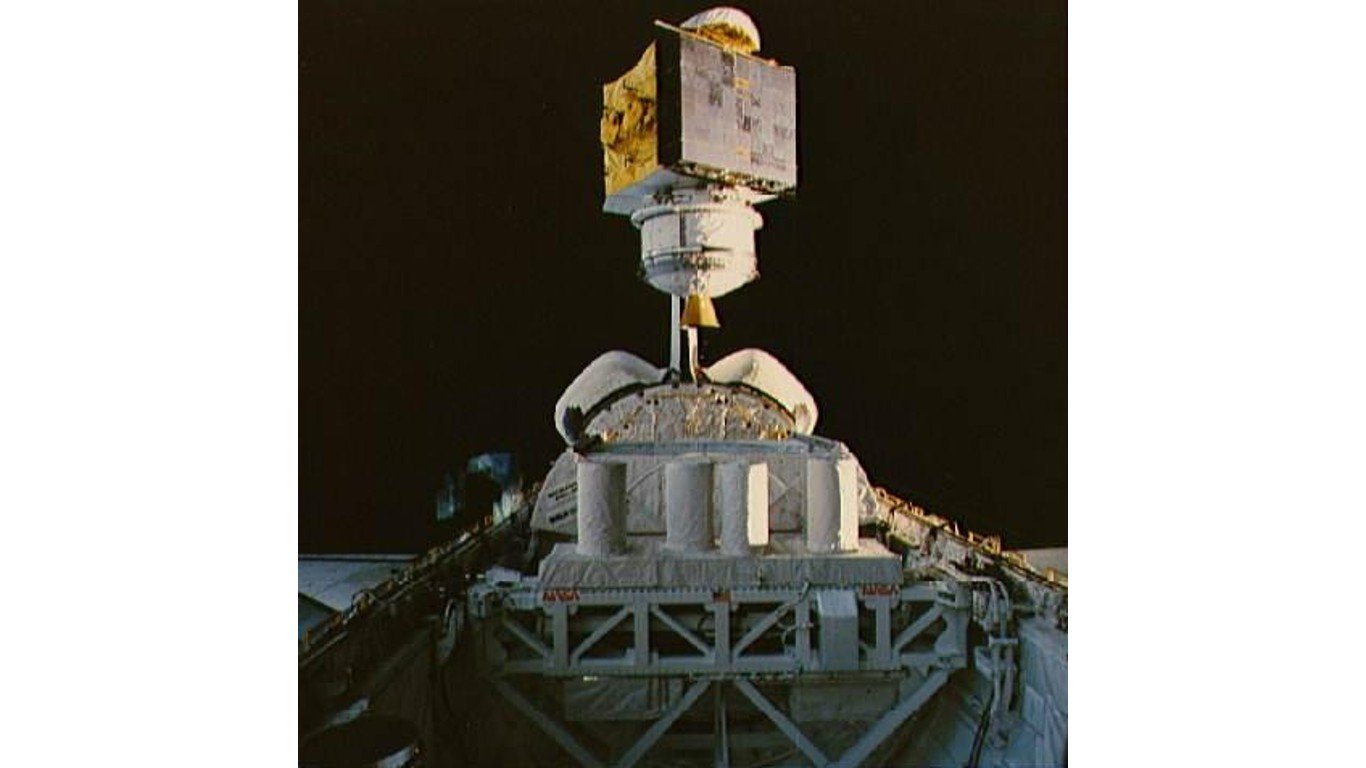
Over the past three fiscal years, DOD allocated a $9.1 billion budget for research and development, testing, and evaluation for Satellite Communications (SATCOM) projects. Total DOD spending from FY 2022-2024 came to $11.0 billion, the seventh most expensive weapon system in the defense budget. Boeing is the primary contractor making these satellites for the Space Force.
Department of Defense FY2024 budget description: “Initiates PTS prototype payload launch vehicle integration and PTS Engineering and Manufacturing Development (EMD) phase for the new purpose-built high-throughput anti-jam satellite system.”
2. LGM-35A Sentinel
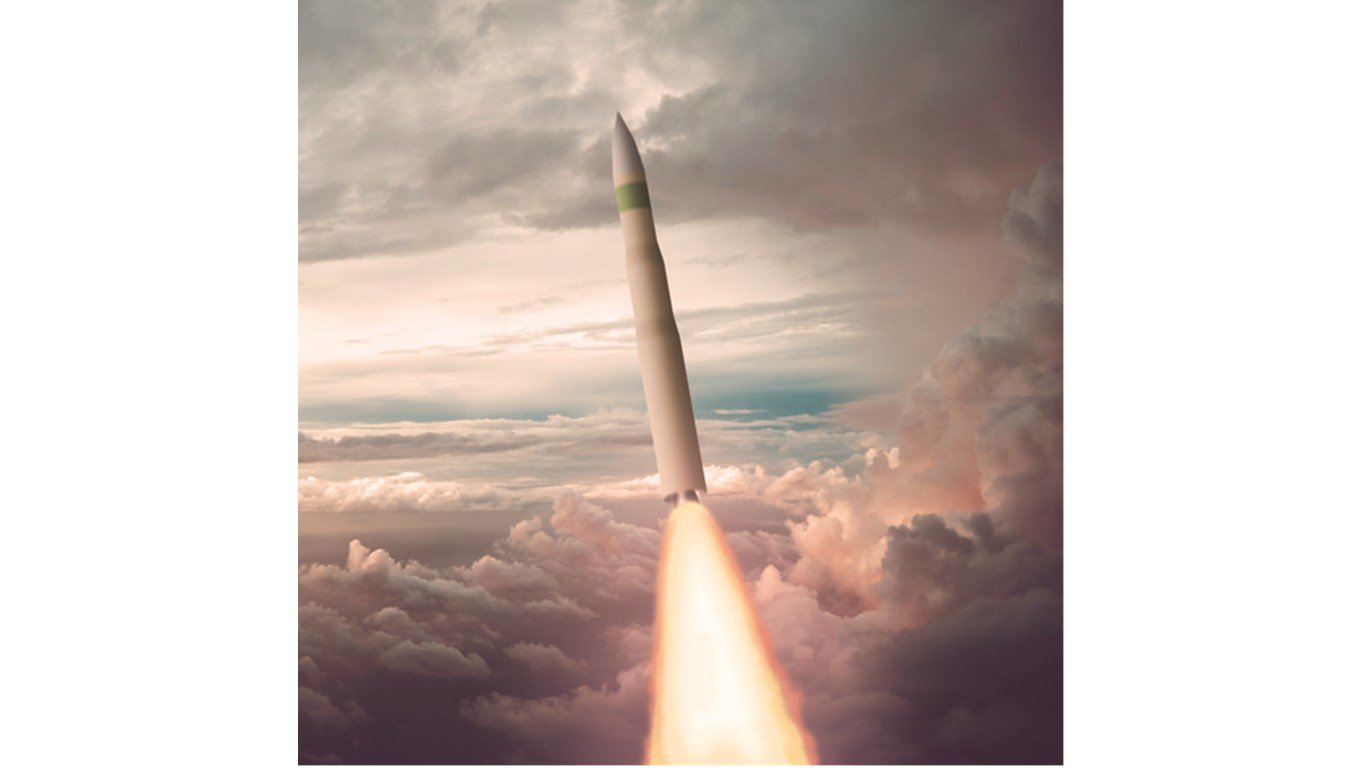
The DOD allocated a $9.8 billion budget over the past three fiscal years for the research and development, testing, and evaluation of the LGM-35A Sentinel. Total DOD program spending from FY 2022-2024 came to $10.4 billion, the ninth most expensive weapon system in the defense budget. Northrop Grumman, Aerospace Systems, and Boeing Defense are the primary contractors making these ballistic missiles for the Air Force.
Department of Defense FY2024 budget description: “The LGM-35A Sentinel, formerly the Ground Based Strategic Deterrent, program is the Air Force effort to replace the aging LGM-30 Minuteman III intercontinental ballistic missile (ICBM) weapon system… Sentinel will modernize or replace Minuteman III flight systems, weapon system command and control, and launch systems, including missile silos, control centers, and other ground infrastructure. The program entered the Engineering and Manufacturing Development (EMD) phase in September 2020. Deployment is projected to begin in the late 2020s.”
1. OPIR Space Based Missile Warning Systems

From FY 2022-2024, the DOD allocated $11.8 billion to the budget for research and development, testing, and evaluation of the OPIR Space Based Missile Warning System. Total DOD spending over the past three fiscal years came to $12.2 billion, the sixth most expensive weapon system in the defense budget. Integrated Defense Systems is the primary contractor making these warning systems for the Space Force.
Department of Defense FY2024 budget description: “Next Generation Overhead Persistent Infrared Program (OPIR) and Resilient Missile Warning and Missile Tracking (MW/MT) are the follow-on systems to the Space Based Infrared System (SBIRS) that will: (1) field two Geosynchronous Earth Orbit (GEO), two Polar satellites in Highly Elliptical Orbit (HEO), and an integrated centralized ground station; and (2) field 39 Low Earth Orbit and up to nine Medium Earth Orbit MW/MT capabilities. Next-Gen OPIR will rapidly deliver strategically survivable missile warning capabilities, which detect advances made in adversarial missile technology and address counter-space systems with added resiliency features.”
Smart Investors Are Quietly Loading Up on These “Dividend Legends”
If you want your portfolio to pay you cash like clockwork, it’s time to stop blindly following conventional wisdom like relying on Dividend Aristocrats. There’s a better option, and we want to show you. We’re offering a brand-new report on 2 stocks we believe offer the rare combination of a high dividend yield and significant stock appreciation upside. If you’re tired of feeling one step behind in this market, this free report is a must-read for you.
Click here to download your FREE copy of “2 Dividend Legends to Hold Forever” and start improving your portfolio today.
Thank you for reading! Have some feedback for us?
Contact the 24/7 Wall St. editorial team.
